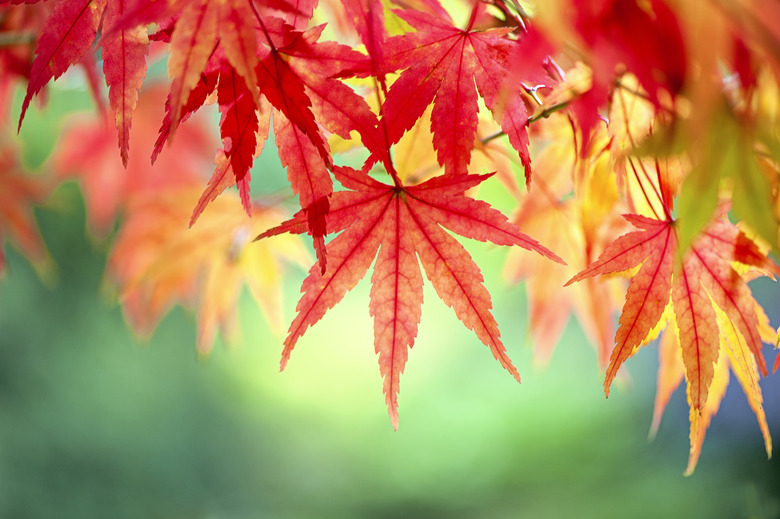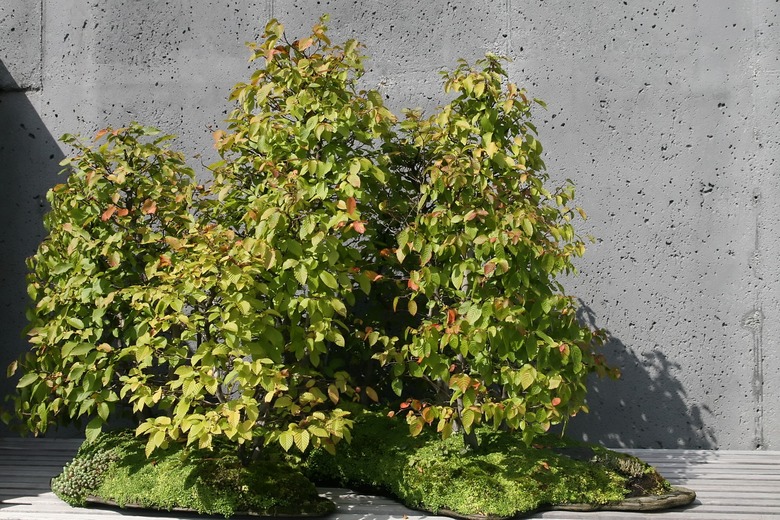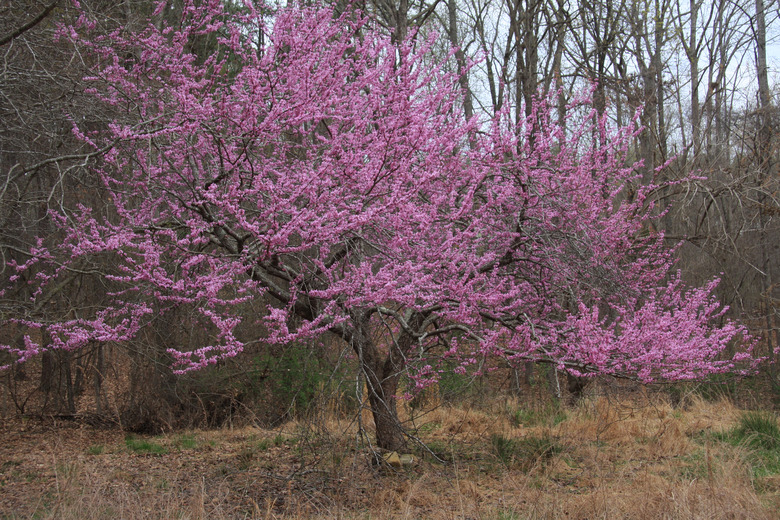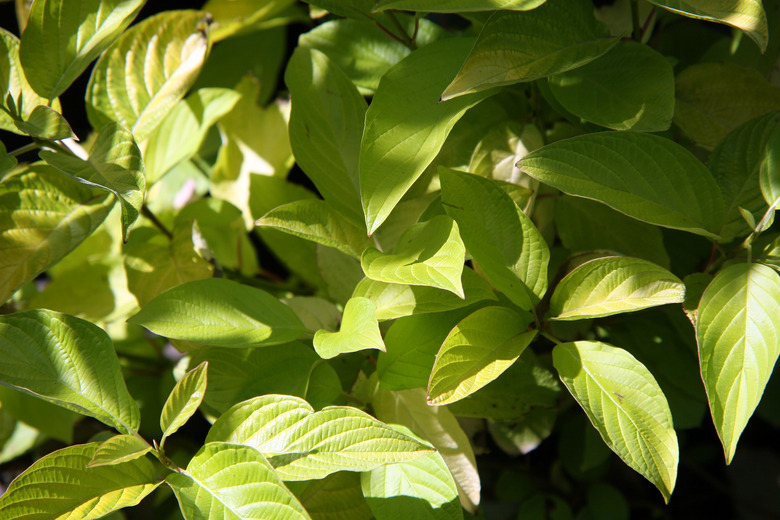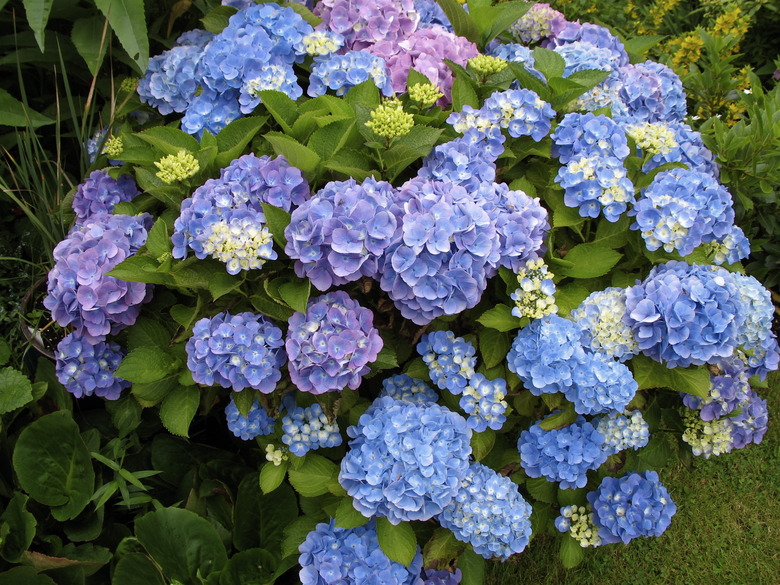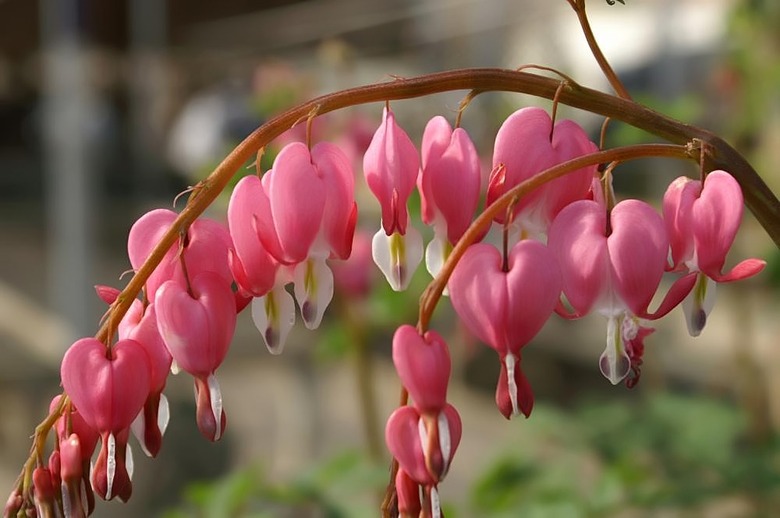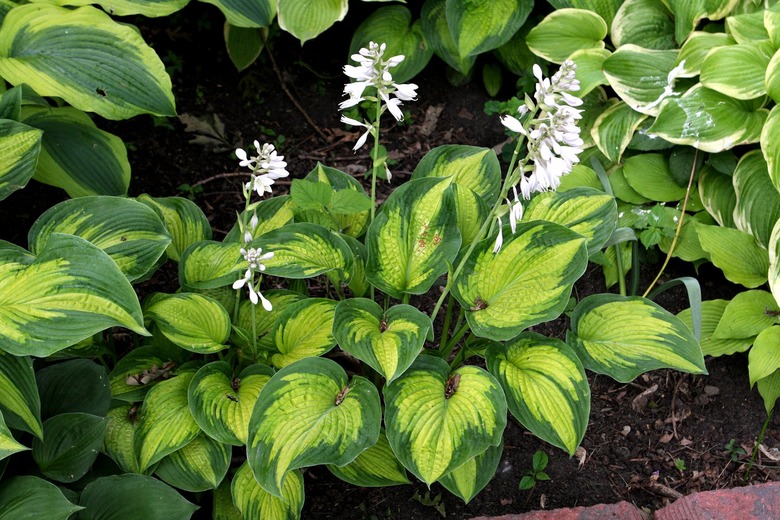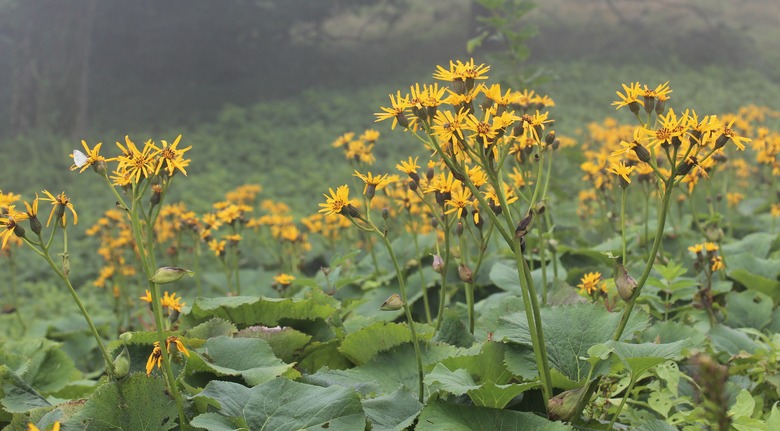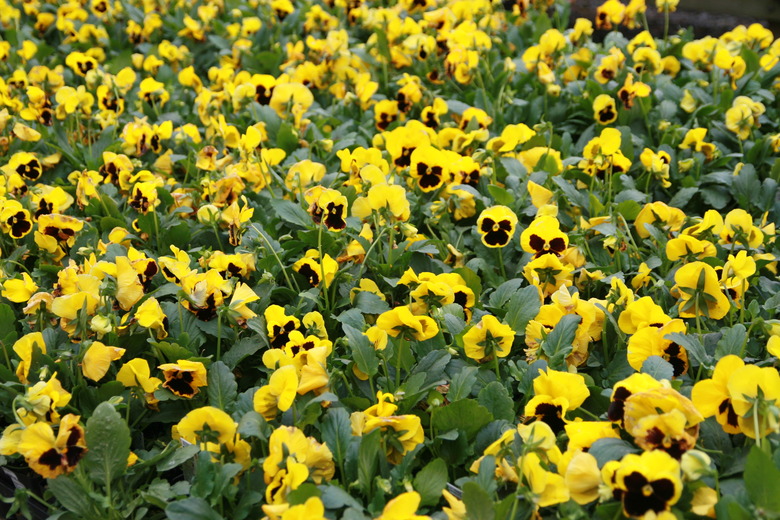Plants For The North Side Of The House
Planning and planting a landscape requires evaluating the environmental conditions, from soil type to moisture to sun exposure, including the lack of direct sunlight. The best plants, shrubs and trees for the north side of the house all thrive in low light conditions.
A north-facing garden may feature reflected light from a nearby structure or remain in deep shade year-round. Despite the low-light conditions, a variety of flowering plants will thrive in a well-tended shade garden.
Planting a Shade Garden
While the house may shade most of the garden, when planting ground covers, plants and shrubs, consider the light levels when planting further away from the structure.
Sunlight Levels
Though the first 5 to 10 feet from the building may be in deep shade, the next 10 to 20 feet may feature bright filtered, dappled or partial shade, depending on the height of the house and the season.
In summer, the sun is higher and may provide additional light, while the same garden may remain in deep shade all winter. A neighboring wall or other structure can also reflect sunlight onto the landscape, providing a little extra light and warmth to make a slightly warmer, brighter microclimate.
The levels of sun and shade are generally determined by the hours of sunlight received in the garden daily:
- **Full sun:** Six hours or more of sunlight daily
- **Part or partial sun:** Four to six hours of direct sunlight daily
- **Light to part shade:** Three to six hours of direct sunlight daily, preferably morning sun only
- **Partial shade:** Two hours of direct sunlight daily or six hours or more of reflected light or dappled shade from an open tree canopy
- **Full shade:** Less than one to two hours of sunlight daily, or dappled shade from a tree that allows less than 50 percent of sunlight through the canopy
- **Deep shade:** No direct sunlight, little indirect light
Soil
In addition to the variables of shade, consider the soil type and whether it is well-drained or boggy. A soil test helps determine the pH level and nutrients in the soil. Amend the soil accordingly with compost and fertilizers per the soil test results.
Defensible Space
Another consideration is the defensibility of the space. In dry or drought-stricken areas, particularly in the western and mountain states, the 5 feet closest to the foundation and porch should be gravel, pavers, bricks, concrete or other nonflammable materials.
In fire-prone areas, avoid planting flammable plants like junipers, and trim overhanging tree branches to 10 feet or more from the roof.
Choosing Shade-Loving Trees
Small shade-loving trees are among the choices for partial sun or shade locations. Choose trees that thrive in your local U.S. Department of Agriculture plant hardiness zone to use as a focal point, backdrop or to conceal unattractive fences or sheds and/or provide privacy in courtyards and other small spaces.
Blue Beech Tree
Bluish-gray bark and dark green leaves that turn yellow, orange and red in fall make blue beech (Carpinus caroliniana), a North American native tree, an attractive element in the garden. Catkins hang on the branches from winter through spring, resulting in hop-like fruits that stay on the tree until fall.
Prune to a shrub form to make it a backdrop or screen, or grow as a single or multi-stemmed small shade tree. Also known as American hornbeam and musclewood, it is slow-growing and thrives in the shade of larger trees.
- **Type:** Deciduous
- **Size:** 20 to 35 feet tall and wide
- **Soil Types:** Acidic to alkaline, well-drained clay or loam
- **Water Needs:** Moderate to moist
- **Light:** Full sun to full shade
- **USDA zones:** 3 to 9
Eastern Redbud Tree
Also known as the American redbud, Mexican redbud and redbud (Cercis canadensis), this North American native tree produces pink, lavender-to-purple or red-to-burgundy flowers before it leafs out in spring.
A host to a dozen or more butterfly species' caterpillars and a bee and butterfly magnet, a redbud tree may be used as a focal point or part of a naturalized landscape. It is safe to plant near black walnut trees, is deer resistant and tolerates urban pollution.
- **Type:** Deciduous
- **Size:** 20 to 30 feet tall and 25 to 35 feet wide
- **Soil Types:** Acidic to alkaline and well-drained clay, loam or sand
- **Water Needs:** Moderate to moist
- **Light:** Full sun to partial shade, depending on the cultivar
- **USDA Zones:** 4a to 9b
Japanese Maple Tree
Native to Asia, a Japanese maple tree (Acer palmatum) may feature green, red-to-burgundy or variegated leaves, depending on the cultivar. The leaves turn yellow, orange or red in fall.
The branches of these small trees may be allowed to droop nearly to the ground or pruned to allow additional plantings or foot traffic underneath the tree.
- **Type:** Deciduous
- **Size:** 15 to 25 feet tall and wide
- **Soil Types:** Acidic well-drained clay, loam or sand
- **Water Needs:** Moderate
- **Light:** Part sun to partial shade
- **USDA Zones:** 5b to 8b
Planting Shrubs in the Shade
The best shrubs for the north side of the house range from low-growing, more suited as ground covers, to small tree size. Some species may be pruned to form single- or multi-stemmed tree forms.
Plant far enough from the house to allow room between the structure and branches for air circulation and home maintenance. In general, flowering trees and shrubs should be pruned as soon as the flowers fade to avoid trimming off next year's flower buds.
Camellia or Japanese Camellia
The large, lush flowers of camellias (Camellia japonica) appear in late winter and early spring. Semi-double to double flowers may be white, yellow, pink, rose, red or variegated, depending on the cultivar.
Native to northeastern Asia and Japan, this early-flowering large shrub attracts bees, butterflies and hummingbirds, shelters songbirds in winter and is deer resistant.
- **Type:** Evergreen
- **Size:** 10 to 13 feet tall and 5 to 10 feet wide
- **Soil Types:** Acidic, well-drained loam
- **Water Needs:** Moderate to moist
- **Light:** Part to full shade
- **USDA Zones:** 7b to 9a, depending on the cultivar
Garden Glow Dogwood
Dogwoods (Cornus spp.) include a variety of flowering small trees or shrubs. Many can be pruned to either a shrub or single to multi-stemmed tree form.
Garden Glow dogwood (Cornus hessei 'Garden Glow') is one of the smaller cultivars suited for shady gardens. In dappled sun and light shade locations, it produces small white flowers and chartreuse-yellow to lime green leaves that change to deep green if the shrub is planted in deep shade.
The leaves turn to red, burgundy and/or purple in fall and, after the leaves drop, the bare twigs stay scarlet through winter.
- **Type:** Deciduous
- **Size:** 4 to 5 feet tall and wide
- **Soil Types:** Acidic to neutral pH, well-drained clay, loam or sand
- **Water Needs:** Moderate to moist
- **Light:** Partial to full shade
- **USDA Zones:** 4 to 8
French or Bigleaf Hydrangea
When asking the question, "do hydrangeas like a north-facing garden," there are several hydrangea species that thrive in partial shade locations, including the oak leaf (Hydrangea quercifolia) and the compact and cold-hardy panicle (Hydrangea paniculata).
For a colorful display of pink, lilac or blue flowers every summer and fall, however, plant one of the French hydrangea cultivars (Hydrangea macrophylla). French hydrangea flowers change color depending on the soil alkalinity or acidity. A neutral pH level in the soil results in lilac flowers, while an alkaline soil changes the flowers to pink and acidic soil to blue.
- **Type:** Deciduous
- **Size:** 6 to 10 feet tall and wide
- **Soil Types:** Acid to alkaline well-drained loam
- **Water Needs:** Moderate to moist
- **Light:** Part to full shade
- **USDA Zones:** 6 to 11, depending on the cultivar
Hummingbird Sweet Pepperbush
Sweet pepperbush (Clethra alnifolia 'Hummingbird'), also known as summersweet, is native to the eastern states and west to Texas. This suckering shrub should have its root suckers removed immediately to prevent it from spreading, unless planted in a naturalized garden.
The fragrant white flowers appear in mid to late summer, attracting bees, butterflies and hummingbirds. The cultivar Hummingbird produces more flowers and is smaller and slower growing than the original species plant.
- **Type:** Deciduous
- **Size:** 2 to 4 feet tall and 3 to 5 feet wide
- **Soil Types:** Acidic, well-drained clay, loam or sand
- **Water Needs:** Moderate to wet
- **Light:** Full sun to full shade
- **USDA Zones:** 3 to 9
Selecting Perennials and Other Plants
Many perennials and annuals thrive in the shade. Plant according to the label directions, whether using seeds or transplants. In general, remove weeds, grasses, rocks and sticks before digging in 2 to 3 inches of compost and other amendments recommended by a soil test.
Bleeding Heart or Japanese Bleeding Heart
The fern-like delicate, arching branches of bleeding hearts (Lamprocapnos spectabilis syn. Dicentra spectabilis) tipped with pink and white flowers add color to the garden in spring and early summer. While the foliage dies back in the hot days of summer, the plants return in spring.
- **Type:** Perennial rhizome
- **Size:** 1 to 3 feet tall and 2 to 3 feet wide
- **Soil Types:** Slightly acidic to alkaline, well-drained loam
- **Water Needs:** Moist
- **Light:** Partial shade
- **USDA Zones:** 2 to 9
Warning
The sap of bleeding hearts may cause skin irritation, and all parts are poisonous to humans, dogs and cats. If ingested, this plant can cause gastric and respiratory distress and convulsions. Keep out of reach of children and pets.
Colorful Hosta Cultivars
Known for thriving in shady gardens, hosta leaves (Hosta spp.) vary from gold, lime green, green and blue green to variegated. In addition, some hosta cultivars develop flower stalks with bell-like white, lavender or blue blossoms from mid to late summer. While hostas die back in winter, the leaves reappear in spring.
- **Type:** Perennial rhizome
- **Size:** 6 to 48 inches tall and 12 to 36 inches wide
- **Soil Types:** Slightly acidic to alkaline, well-drained clay, loam or sand
- **Water Needs:** Moderate
- **Light:** Partial to full shade
- **USDA Zones:** 3 to 9
Leopard Plant or Summer Ragwort
Native to China and Japan, the leopard plant (Ligularia dentata) is a clumping perennial that features large 12-inch-long dark green leaves and 2- to 3-inch-wide, daisy-like yellow-orange flowers that rise above the foliage in spring and early summer. Some cultivars have purple stems and leaves with purple undersides.
It requires deep, regular watering to thrive. Adding a drip-watering system to apply water directly to the root ball is a water-saving measure that keeps the soil evenly moist while not overwatering nearby plants.
- **Type:** Perennial
- **Size:** 2 to 4 feet tall and 2 to 3 feet wide
- **Soil Types:** Acidic to alkaline, well-drained clay or loam
- **Water Needs:** Moderate to wet
- **Light:** Part to full shade
- **USDA Zones:** 3 to 8
Perky Pansy Plants
The bright faces of pansies (Viola × wittrockiana) add color to a shady garden. While pansies are cool-season perennials, they are often grown as annuals, especially in regions with hot summers.
Most pansies available in garden centers are hybrid cultivars and are unlikely to reseed. If they do, the new plants are likely to resemble one of the parent plants, such as the Johnny jump-up (Viola tricolor, USDA zones 3 to 9).
- **Type:** Short-lived perennial or biennial
- **Size:** 6 to 8 inches tall and 8 to 12 inches wide
- **Soil Types:** Acidic, well-drained loam
- **Water Needs:** Moderate
- **Light:** Full sun to partial shade
- **USDA Zones:** 6 to 11
Warning
Avoid planting creeping Jenny (Lysimachia nummularia), also known as moneywort and creeping yellow loosestrife; English ivy (Hedera helix); vinca (Vinca spp.) and other invasive plants. While often recommended for shade gardens, they are difficult to eradicate once established in the landscape.
References
- University of Minnesota Extension: Gardening in the Shade
- K-State Research and Extension: Defining Sun Requirements for Plants
- Oregon State University Extension Service: Keeping Your Home and Property Safe from Wildfire
- University of Minnesota Extension: Blue Beech
- Missouri Botanical Garden: Cercis canadensis
- Oregon State University: Landscape Plants – Acer palmatum
- North Carolina Extension Gardener Plant Toolbox: Camellia japonica
- University of Minnesota: Garden Glow Dogwood – Cornus hessei 'Garden Glow'
- Missouri Botanical Garden: Hydrangea macrophylla (Group)
- Missouri Botanical Garden: Clethra alnifolia 'Hummingbird'
- North Carolina Extension Gardener Plant Toolbox: Lamprocapnos spectabilis
- University of Minnesota Extension: Hostas
- Missouri Botanical Garden: Ligularia dentata
- Missouri Botanical Garden: Viola × wittrockiana
- Invasive.Org: Invasive and Exotic Weeds
